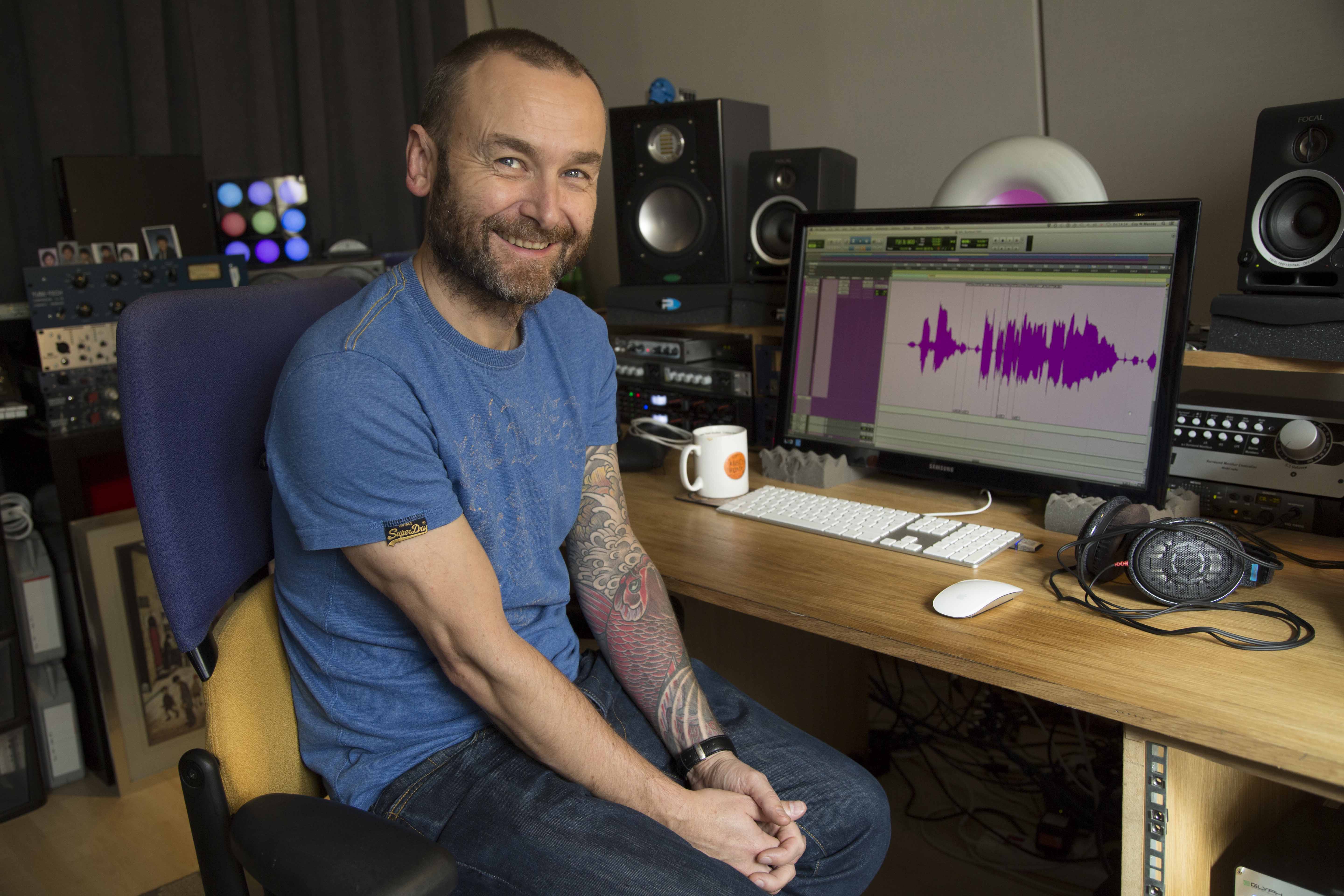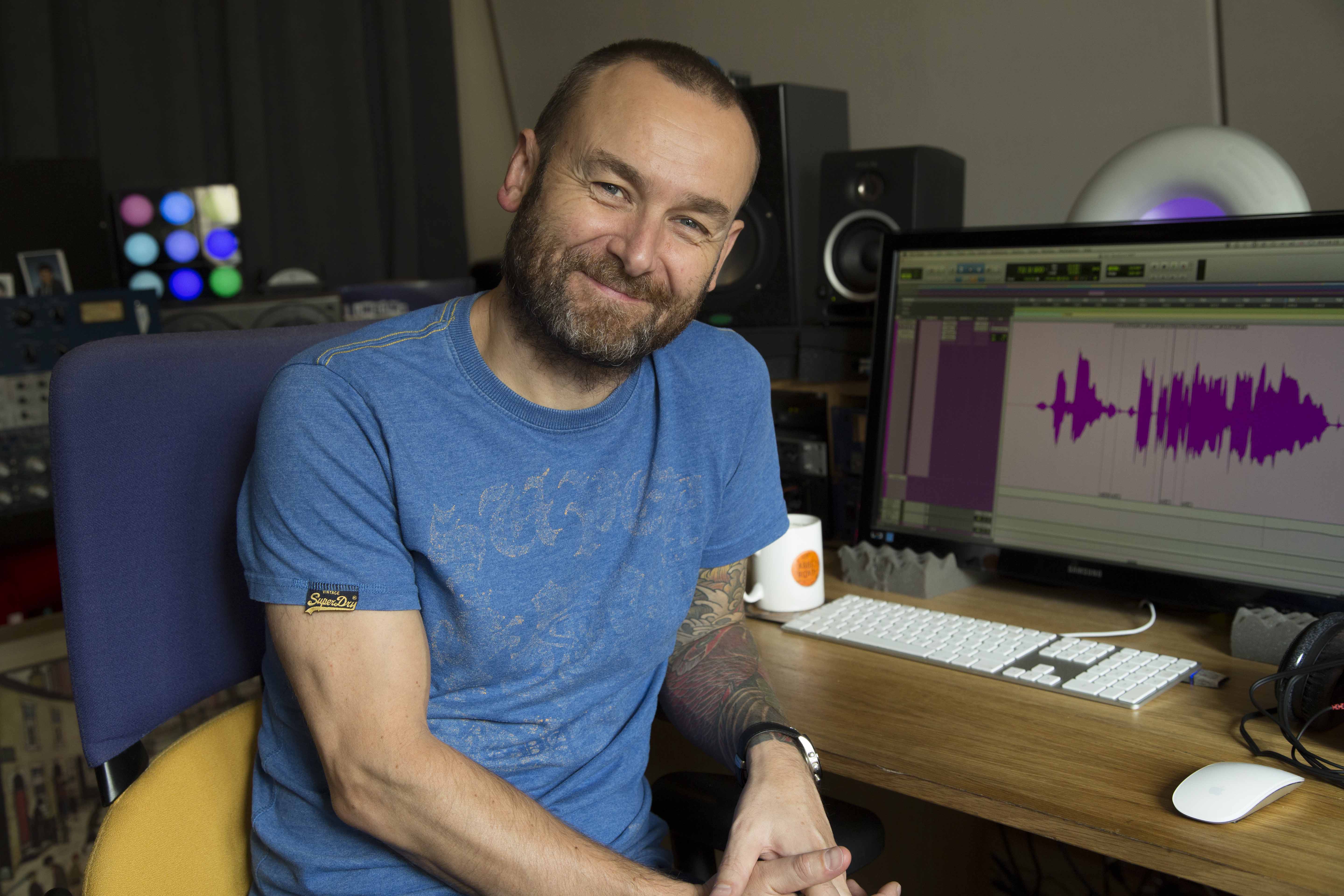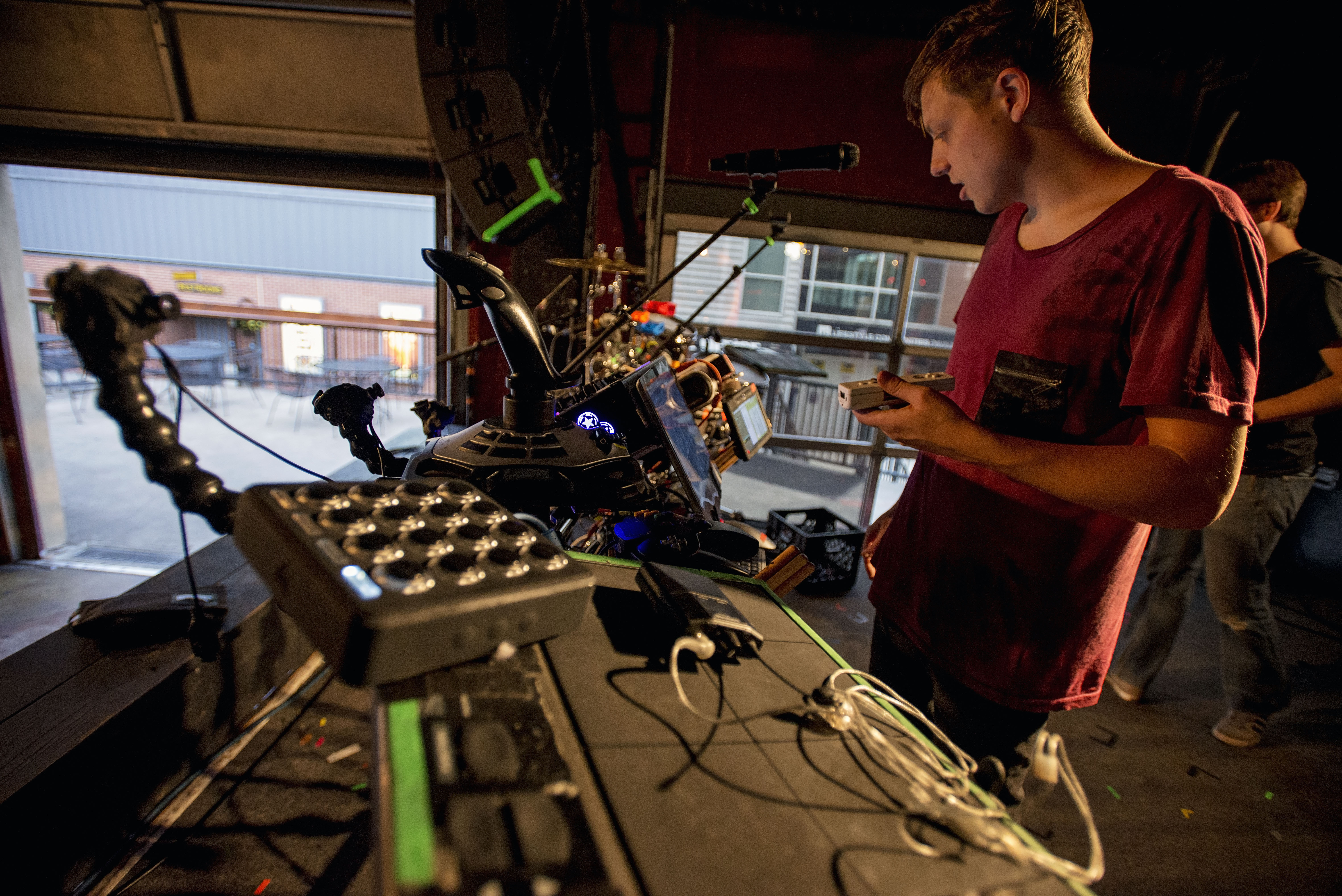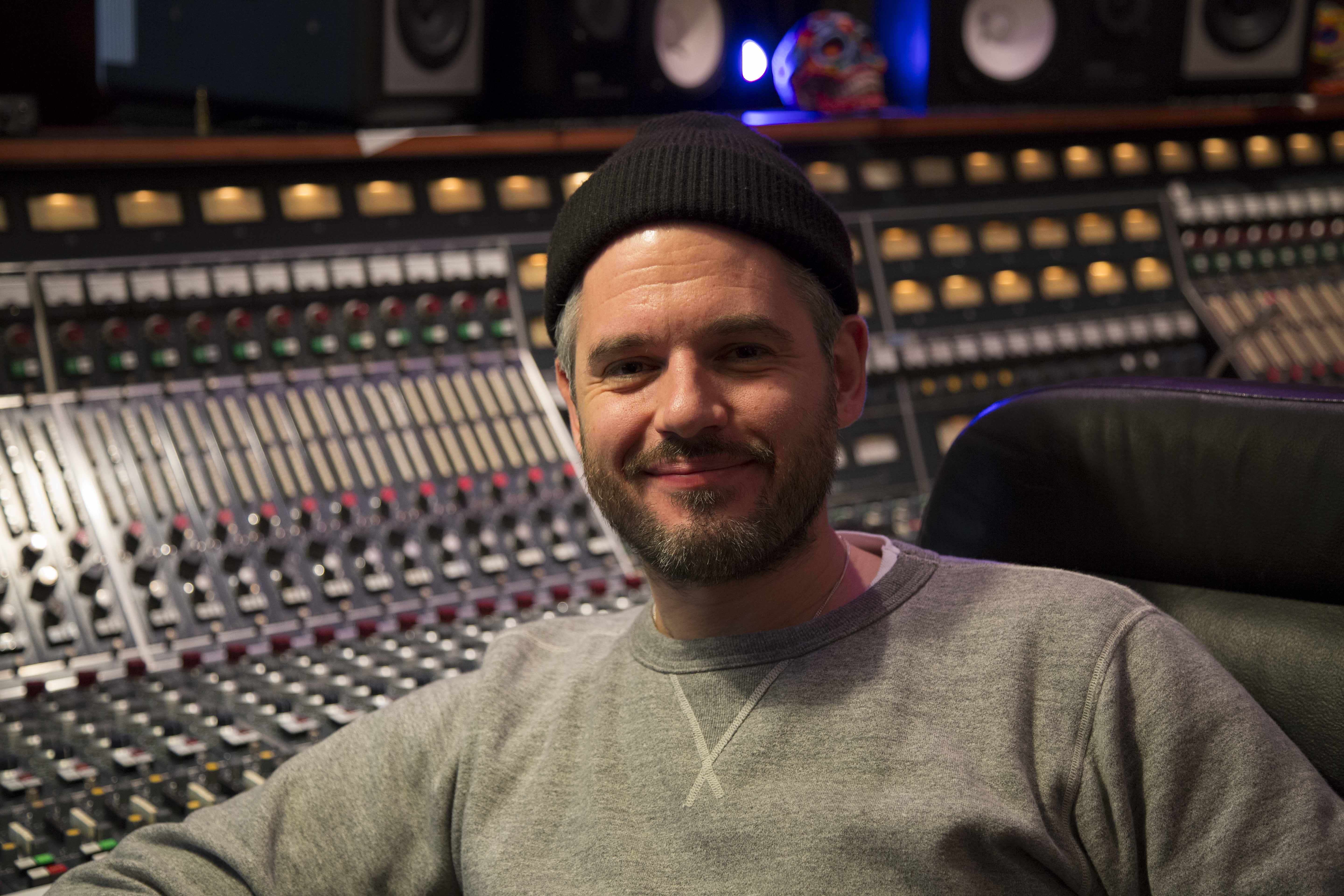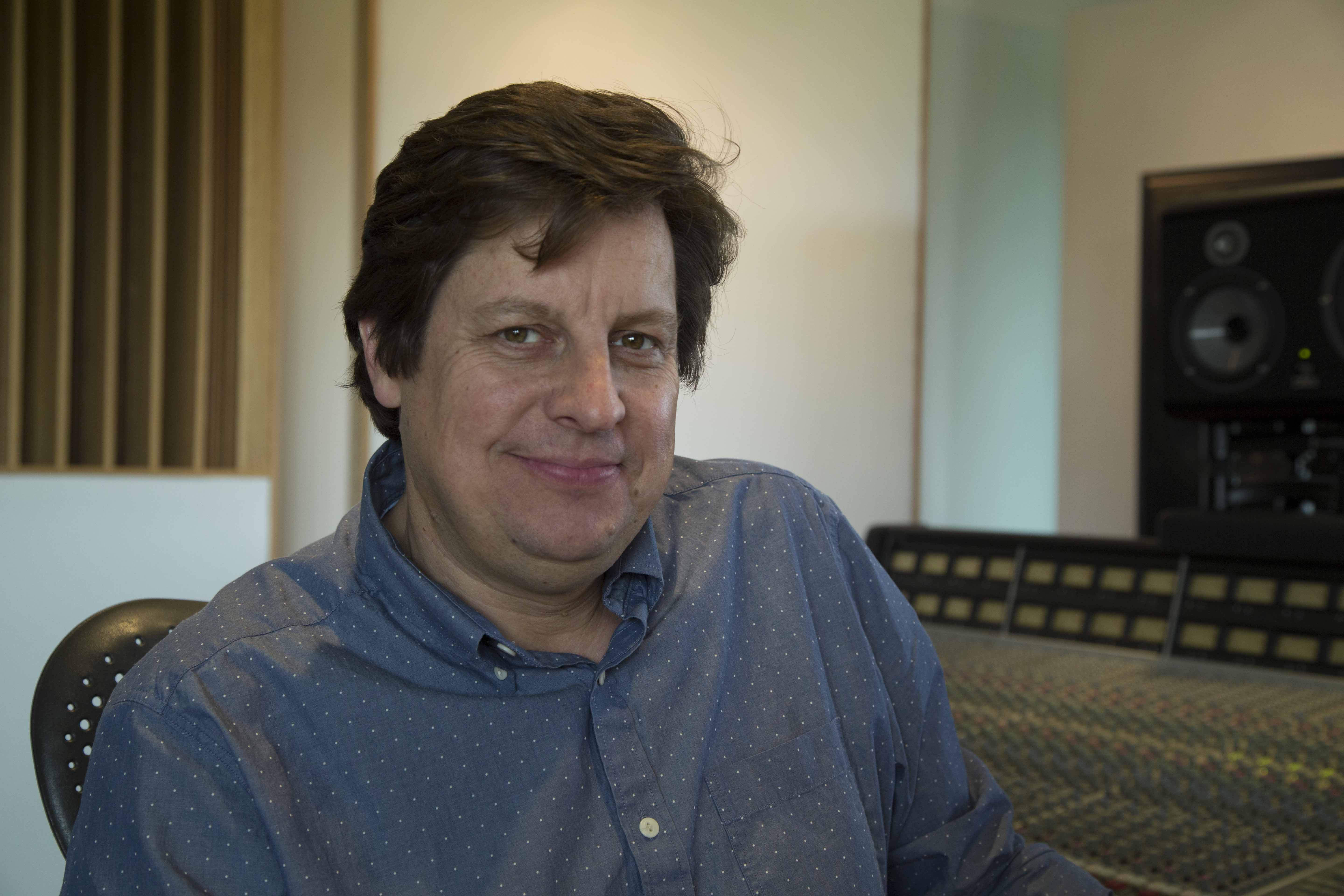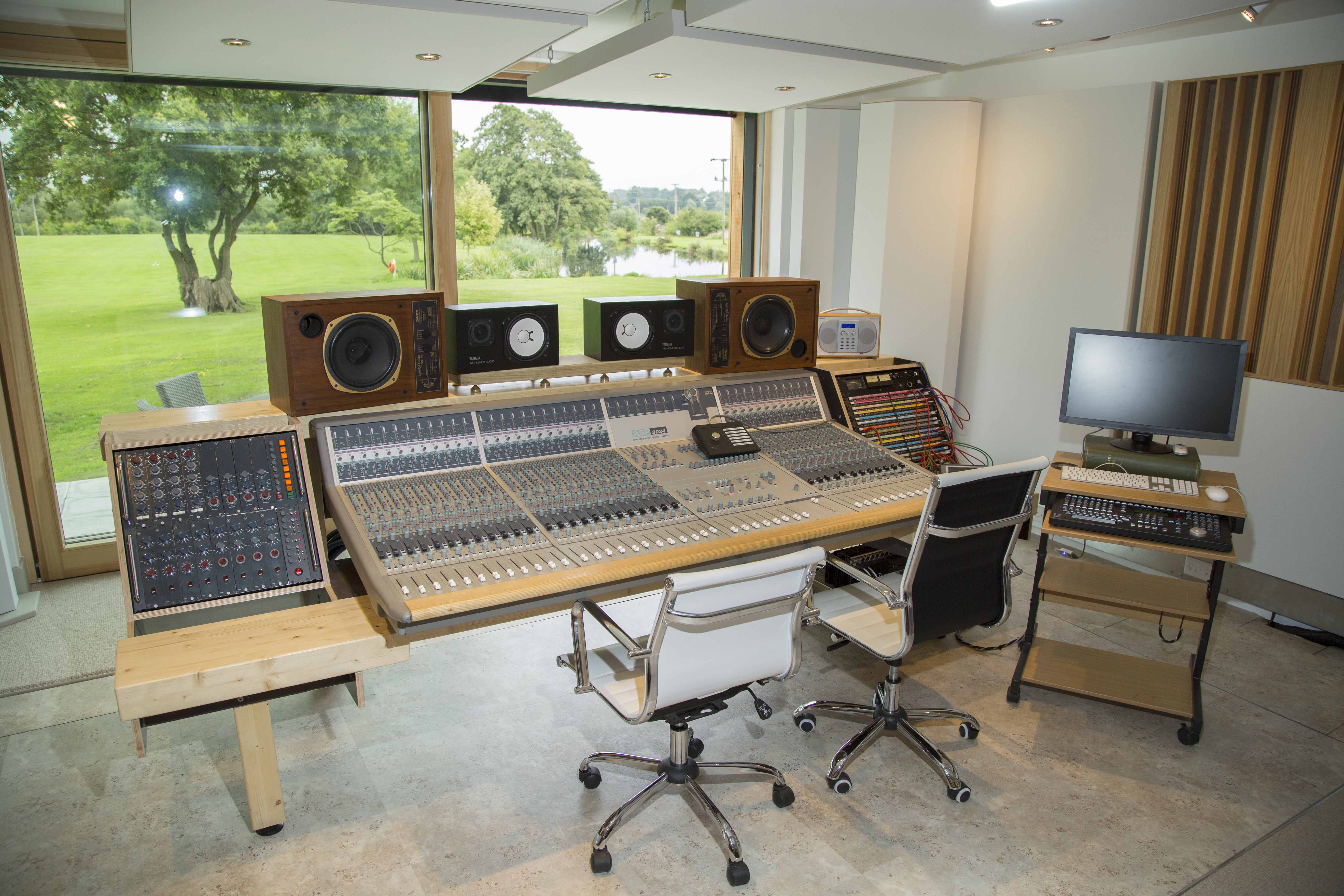Alan Moulder, one of the world’s most sought-after mix engineers and producers of alternative and industrial rock, talks about the new studio he, and fellow producer Flood, have set up together.
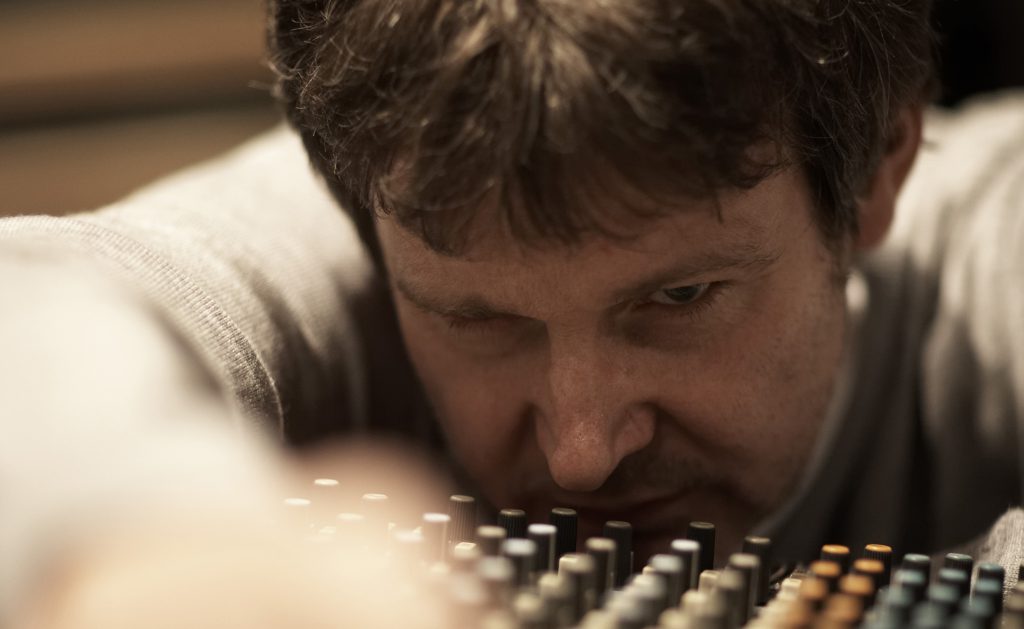
Alan Moulder
It was looking like we might not get an interview with Alan Moulder. He was busy putting the final touches to a Placebo album track mix, and his dislike of having his picture taken also meant that getting a photograph of him in the studio seemed unlikely, but sometimes things turn out fine!
Bang on time, Alan appears in the doorway of the new Assault & Battery 2 live room, and seems surprisingly friendly and relaxed. The Placebo track he was working on in the downstairs mixing room of the North London studio complex is now done, and he seems perfectly happy to participate in a full photo session and interview.
It turns out that the newly acquired 1860-square foot first floor studio (comprising a large control room, spacious live studio and two isolation booths, each capable of housing ensembles or whole bands), is primarily a facility for tracking. For the last four years most of Alan’s mixing has taken place in the building’s basement, where he and long-time friend and collaborator, Flood, share another studio. Reached from reception by following a short, narrow corridor and descending a few steps, the mix room is obviously far more established and homely than the new one up on the first floor, having been dressed with rugs and thick velvety curtains and lit by domestic standard lamps. It is also home to the large SSL G+ Ultimation 72-channel desk, once owned by Trent Reznor of Nine Inch Nails, but bought by Alan and shipped over from New Orleans when Trent moved his studio to LA. “I rescued it from the flood,” says Alan, referring to the devastation caused by Hurricane Katrina, not business partner Flood. We laugh at the unintentional gag, and the atmosphere becomes even more relaxed. Alan fondly recalls that it was this desk he used to mix the 1999 US chart-topping double album The Fragile, by Nine Inch Nails.
Home From Home
Alan has yet to make himself feel quite so at home in the more-functional looking tracking room, reached by climbing a very wide flight of stairs leading directly up and out of the reception waiting area. “I’ve hardly spent any time in here at all,” he admits as we move into the control room to do the interview. “It’s because I’ve been recording less and mixing more. I haven’t got any recording projects lined up in here at the moment but I’m really looking for something so I can to put the studio through its paces. It’s not until you work in the place that you find out what you want to change or where you want it to go. Flood has pioneered the way on that one so far but I’m looking forward to following when I can.”
At the heart of the control room is a fairly old Neve VR60 desk, with flying faders, Total Recall and Events Automation, plus a long line of racked outboard processors. Beyond the meter bridge is the large live room, partly illuminated by skylights. Opposite the left-hand mirrored wall are the two isolation booths, one of which contains Flood and Alan’s collection of vintage analogue synthesizers, including the Roland System 700 modular, EMS VCS3 and Moog Minimoog. There are also a couple of guitar racks, one holding a Fender bass, identical to the one owned by U2’s Adam Clayton. “When Flood was working with U2 he really liked it so he had one for himself,” Alan explains.
The main recording system, located in a space at the back of the control room is a Protools HD3 Accel rig running on an Intel 8-core Mac Pro. The converters are clocked by a Rosendahl Nanosync and there are 48 outputs and 24 inputs. Sitting alongside this very modern setup are two 24-track two-inch tape machines used in conjunction with a Dolby SR XP Rack system. The more reliable Otari MTR90 II is the favoured machine, whereas the Studer A800 MKIII is on hand if needed. “Flood has really got back into using tape,” explains Alan, “and, I must admit, for the next production I’d think about it. It depends on the situation; whether 24-tracks is enough, but we like the idea of having it available and the last three things Flood has done has all been on two-inch. It’s also good to have so the assistants are able get to work on tape, rather than just hear about it as a mythical medium. It does sound good and is another tool in the arsenal. One day you might go into Pro Tools and think ‘Actually, this track would sound great on tape.’”
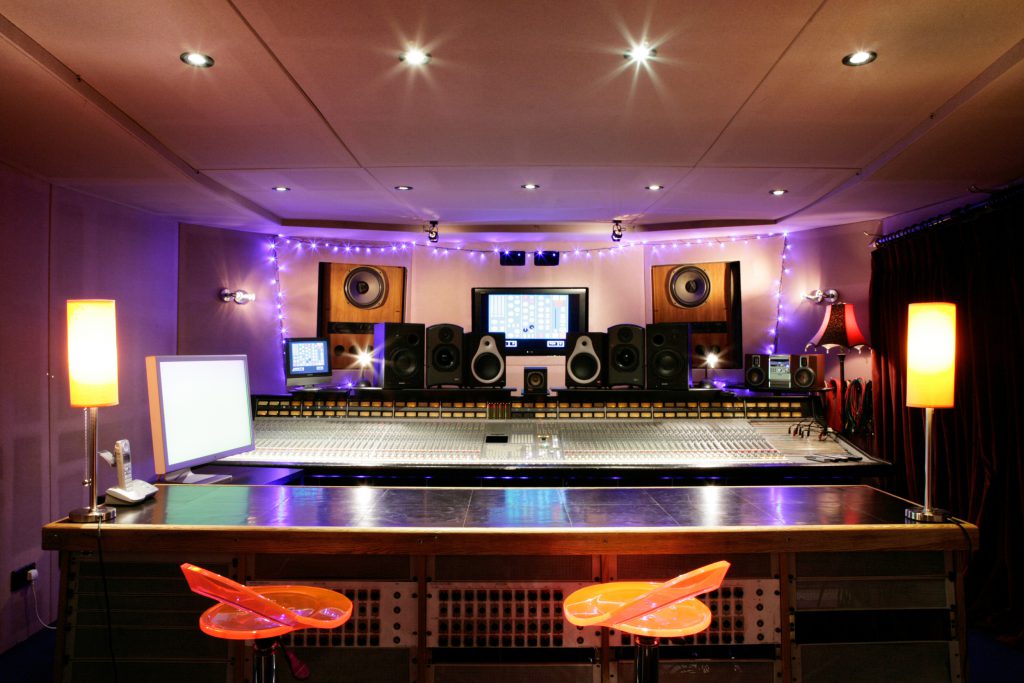
Alan and Flood’s Studio
Battery In The Basement
Several years ago, Alan and Flood created the basement mix studio because they were finding that the commercial mix rooms they liked were fast disappearing, and feared that soon they would not be able to find suitable facilities for projects. “We were right because most of the ones we liked have now gone,” Alan insists. “So when this place became available we thought that to record up here and mix downstairs would be great, although we haven’t quite worked like that yet.
“We have rented this room in the past when we were working with the Killers, and had them finishing off guitar, vocal and keyboards overdubs, while I was mixing downstairs, but neither Flood or I had used it for full-on tracking until we moved in. Flood started off recording The Hours, which was a full on band setup. We’ve also had The View record some B-sides and we’ve done a couple of 12-piece string sections in the big live room, one for Placebo, and another for Patrick Wolf. Over the last few months, I’ve mixed 18 songs by Placebo, although I think the album will include 11. We’ve also done Bloc Party’s last album and a new band called Wise. We’ve been doing albums rather than single tracks but I did mix a Perry Farrell composition for a film called Twilight.”
One of the main advantages of having the tracking room and mix room in the same building is that it has enabled Flood and Alan to gather together all of their favourite instruments, amps and processors. “Flood was using a little recording room in Kilburn, so there was a geographical distance. Now all the stuff we’ve picked up over the years is either in the tracking studio, our mix room or the store room, so we can immediately share it or grab what we want.
“We are setting this room up so you can mix in it as well as track, so that it’s possible to see a project though to the end in the one room. There doesn’t seem to be so much of that these days. If you have an outside mixer then you are getting a fresh perspective all the way down the line, but I know Flood is into the idea of staying in the same room and having the recording engineer mix it with him. This is instead of having a mix gun come in and mix it. When we started you didn’t have the mix guns – people like Spike Stent and myself – who are more mix people than producers.
“A lot of the gear is the same in both rooms because we both tended to own the same stuff and Flood brought his racks from Kilburn, so we already had another Manley Vari-Mu compressor, Massive Passive EQ, Chandler TG1 and duplicates of the Eventide stuff. But there is also some extra stuff up here that is more recording based, like the Helios Type 69 and the Trident MTA microphone preamps, which give us a wider range of colours than we can get from the Neve alone.”
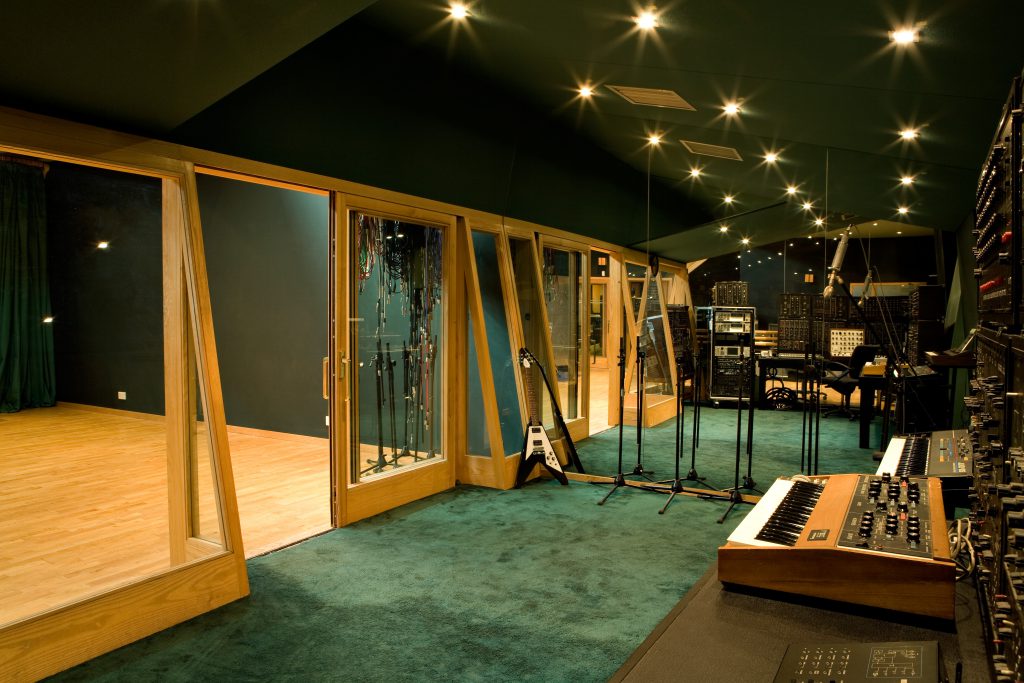
A large recording booth adjacent to the main live room
Desks Apart
The clearest difference between the two rooms is the use of a Neve desk in the tracking room and an SSL in the mix studio. “You find that when you get a track on a different console it’s changed the sound, but the Neve/SSL combination has proved to be a good one,” continues Alan. “The Neve is a good solid tracking board and you get a hell of a lot for your money. The price of consoles has come down so you get a really good board at a much better price than you used to be able to, but we can’t charge as high rates as we could in the past so budgets are tight. Our idea was to not compromise quality, so we tried to find something that was the best utilization of our money.
“For putting across the mix, we both like the Massive Passive and Vari-Mu, and we have an Inward Connection Mix buss knob which basically attenuates the mix and adds a bit of tonal quality that we like, so we tend to use those on mixing, although there’s no standard formula.”
The mix studio’s SSL desk is remarkable for being fitted with both the standard G-series brown EQs (featuring a pair of x3 and /3 switches for the HMF and LMF bands), as well as the older black EQs, offering bell and shelf curves for the LF and HF bands.
“I tend to put the drums through the black ones,” reveals Alan. “I just like the punch of the bottom end, which is good for boosting. I still do a lot of cutting but, certainly for drums, I’d be lost if I wasn’t allowed to boost a bit! I just do whatever sounds good, really.
“The Black EQs are like the E-series EQ and have a different bottom end, whereas the Brown ones have the plus/divide by three switches for the mid range. Rather than changing the shape of the curve, it just changes the turning point from 800 to whatever, so I use that more on vocals and keyboards and stuff like that.
“Generally, I’ve found myself adding less top of late because there’s quite a fashion to record on older boards, and those recordings sometimes have more top end when you run them though an SSL. It may be that the recording desk has been filtering out some of that top, with capacitors going and studios not having the budget to keep on top of the maintenance, so you hear it clearer on the SSL. And with it being digital, it’s all there and apparent so you don’t need to add so much.”
As far as monitoring goes, Alan still relies on Yamaha NS10s and Auratone speakers, although these have recently been joined on the Neve’s meter bridge by Dynaudio BM15As. “We’ve got into them because they are good in-between monitors. They have a bit more full range than the NS10s, work well at both low and high levels and seem to be pretty true. They are not over flattering and for self powered monitors they’re pretty loud which is good – you’ve not got them starting to crap out on you, which a lot of self-powered ones do.”
“I use Auratones a lot for balancing because I find them very detailed. If I’ve started off listening to something loud, it’s relaxing to switch to the Auratone and listen at low level and in high detail. If you can get it to sound great on that speaker then you are in a pretty good place. We’ve also got several of them downstairs.”
As for software and plug-ins, the studio also has an impressive list of processors, but Alan is going through a hardware phase at the moment. “I get bored really easily,” he admits, “so I like to try out different things.” One thing that’s gets used on his mixes all the time at the moment is the EMT 140 Plate reverb, and apparently the studio has several of them. The reason why the huge EMTs can’t be seen anywhere in the studio however, is because they are in a room up on the roof! “We actually had to hire a crane to lift them up there,” laughs Alan.
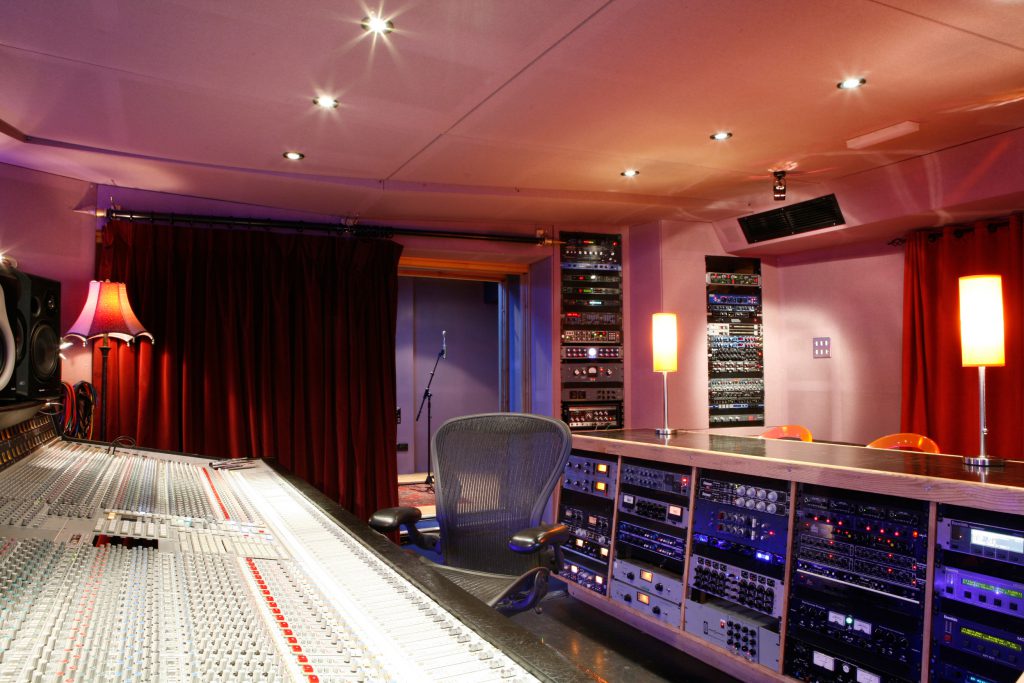
The control room, with desk and gear racks
Strange Rooms
Perhaps the most unusual feature of the tracking studio is a small, soundproofed and wedge-shaped room, measuring about five feet in length, but narrowing from three feet at the door end to half the width at the far end. At the moment, an Ampeg bass head and speaker occupy the fat end, leaving room for a microphone at the other. “That room is where the bass normally goes,” confirms Alan. “It was here when we moved in and I’ve never seen one like that before so I’m not sure if it was a vocal booth. I wonder if it was set up specifically for bass because you always need a room to put the bass to get it away from the drums as much as possible. We’ve been using Neumann U47s and Shure SM57s – the usual mics – and it seems to work pretty well.
“If you want that separated rock sound then that’s a good room to do it, but I’m sure Flood will be doing some productions with everybody and all the amps in the same room, because he’s currently experimenting with no separation, just using the bleed creatively. He’s getting a lot of depth from not having things separated.
“It’s a different way of recording, which is fascinating. The good thing is that once you are committing to that style, that’s how it is and it’s almost mixing itself as you are doing it. It’s more old-school, which I think people seem to be a bit more open to these days compared to the ’90s. People seem to be trying out old techniques and getting quite geeky about it, in a good way.”
Flood and Alan are clearly very excited and happy to have all their gear in one place, and it seems only a matter of time before the pair get it looking and feeling as homely as the mix room in the basement. “We’ve taken the view that the room design will probably evolve, and this is the first incarnation,” Alan concludes. “The more that we work in there, the more things will get moved around. At the moment we thought it would be cool to have one room containing all the synthesizers, but we both like dead drums so it is also a room we’d like to try using for them. We’ve even talked about putting a whole band in there, which will be interesting to try!” TF
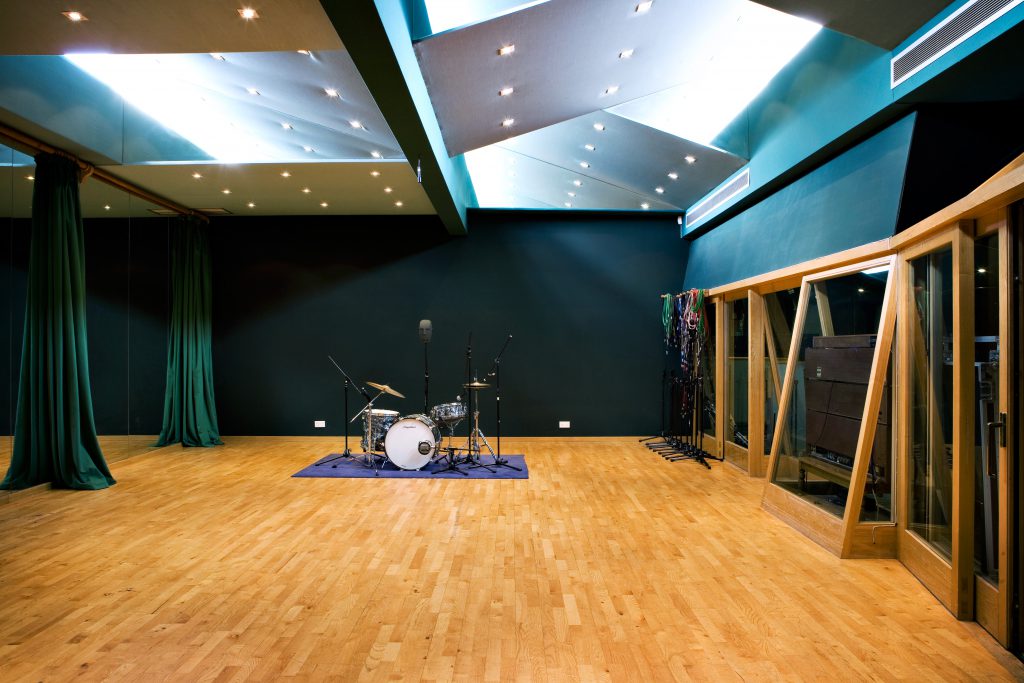
The live room
Want to find out more about Alan’s work? Next issue he talks to us about producing My Bloody Valentine’s Loveless album. Join us on Twitter and we’ll let you know when Issue 5 goes live! Recording My Bloody Valentine’s Loveless

